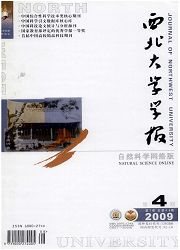

 中文摘要:
中文摘要:
目的探究博格达地区重要转折期的沉积环境和构造特征。方法通过对博格达山南缘地区祁家沟、天池滑塌堆积构造和博格达山北缘白杨河滑塌堆积构造的研究,结合对博格达山及其两侧盆地的侵入岩和火山岩同位素定年和岩石地球化学分析进行研究。结果二叠系沉积时,博格达地区处于区域伸展的裂谷、断陷环境,断陷一裂谷盆地既控制了近源快速的粗碎屑沉积,又控制了板内裂谷环境的基性岩浆侵位和火山喷发、溢流。结论博格达地区早二叠世构造环境发生重大转折,由碰撞造山挤压环境转入造山期后拉张环境。
 英文摘要:
英文摘要:
Aim To study the depositional environment and tectonic features at key turning point in Bogda region. Methods The systematical study to structure of olistostromes distributed in areas of Qijiagou and Tianchi in the southern margin of Bagada Mountains and Baiyanghe area in the northern margin of Bogada Mountains, combined with the isotope dating and geochemical analysis on intrusive rocks and volcanic rocks distributed in basins at both sides of Bogda Mountains. Results Bogda region was the environment of regional extension and rift during Permi- an. Rift depression basin controlled not only rapid deposition of coarse detritus, but also intrusion, eruption and o- verflow of basie rocks under inter-plate rift environment. Condusion In early Permian, the tectonic environment of Bogda area changed significantly from the collision orogeny environment to the post-orogenic extensional environment.
 同期刊论文项目
同期刊论文项目
 同项目期刊论文
同项目期刊论文
 期刊信息
期刊信息
